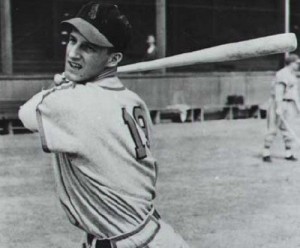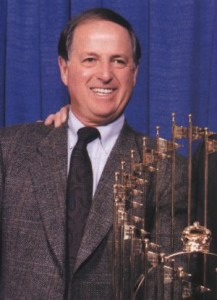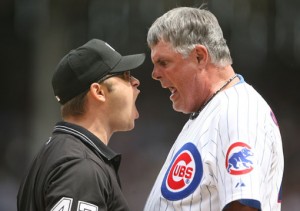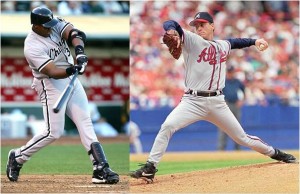70 Years Ago: Stan “The Man” Musial Begins His Remarkable Career 36

Stan Musial was 20-years-old when he made his debut for the St. Louis Cardinals on September 17, 1941.
It was 70 years ago today that one of the magical careers in Major League baseball history had its genesis during the second game of a doubleheader between the Boston Braves and St. Louis Cardinals. A rail-thin 20-year-old left-handed hitter named Stan Musial gave a hint of what was to come by two hits, including a double, and driving home two runs in a 3-2 Cardinals victory.
In hindsight, it is fitting that one of the greatest players in baseball history made his debut during the magical 1941 season.
In the months before Pearl Harbor and America’s entrance into World War II, the country was fixated on baseball and captivated by a pair of stars who were doing magical things with a bat.
Joe DiMaggio of the New York Yankees parlayed a record 56-game hitting streak into the MVP season. Ted Williams “The Splendid Splinter” ran away with baseball’s batting crown with a .406 average. No one could have predicted that 70 years later both records would remain unmatched across the annals of baseball.
Musial’s major league debut came barely a year after it was feared his career might be over before it started. Originally signed from his hometown of Denora, Pennsylvania as a pitcher and outfielder, Musial was playing for Daytona in the Florida State League when he jammed his left shoulder diving for a ball and was no longer able to pitch. However, little more than a year later he was thrust into a playoff race as a late-season call-up of the Cardinals.
When Musial made his debut, the Cardinals were on their way to an impressive 97-56 record, but were a game behind the first place Brooklyn Dodgers. They went 7-5 in the final 12 games, with Musial playing in all 12, and ended the season 2.5 games behind the Dodgers and their 100-54 record.
But it certainly wasn’t Musial’s fault that the Cardinals couldn’t catch the Dodgers. The young outfielder showed glimpses of what was to come over the next 20+ years by hitting .426 with four doubles, a home run and seven RBI in 12 games.
As a rookie in 1942, Musial proved that his audition in 1941 had not been a fluke as he hit .315 with 72 RBI and 32 doubles as the Cardinals won the pennant and the World Series. Read the rest of this entry →




